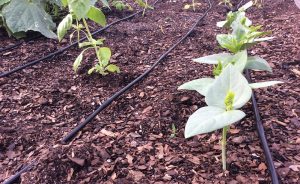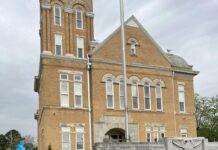 By Mary Leigh Oliver
By Mary Leigh Oliver
AUBURN UNIVERSITY, Ala. – It may sound crazy, but it’s true. Bethany O’Rear, an Alabama Cooperative Extension System home grounds, gardens and home pests regional agent, said when purchasing seed for early summer transplants, availability will be greatest right after Christmas.
“January is the prime month for most seed catalogs to arrive in the mail,” O’Rear said.
Choosing Seed
Knowing which seed to purchase for summer transplants can seem like an overwhelming task. The most common transplants grown indoors include peppers, tomatoes and eggplant. When searching for the best seed, O’Rear has three rules of thumb for purchasing seed.
Look for disease resistant cultivars. Choosing disease resistant varieties is just one way to avoid problems before the growing season begins. Diseases can be a costly and time-consuming issue to deal with during the season, so choosing a disease-resistant variety can help ward off those problems before they begin.
Consider the garden format when choosing seed. Since there are so many ways to plant a garden—containers, raised-beds and large-scale gardens—it is important to consider the end-goal when purchasing seed. There are hearty garden plants, as well as patio-type cultivars, to fit any size or shape of a backyard garden. O’Rear said if you decide to grow in containers on a patio or porch for the season, selecting patio type cultivars is the best choice.
Purchase more seed than needed. Even if your gardening plans only include a few tomato plants, purchasing extra seed can be beneficial.
“Over the last couple of years, finding certain selections of vegetables has been difficult and supplies have been limited,” O’Rear said. “Buying extra seed is a good insurance policy for future gardens.”
Transplant Care
Once the seeds have been planted, they will require special care until they are transplanted into the garden.
Light
In order to ensure healthy, strong transplants, the seeds will require 16 to 18 hours of bright light. It can be natural or artificial. Less light results in a weak transplant.
“To produce enough light, gardeners can use 40-watt 48-inch fluorescent light bulbs,” O’Rear said. “Place these bulbs two to four inches above the seedlings on a timer.”
Lights should be just above the soil line initially and then raised to keep a 2- to 4-inch space between the light and the plants.
Watering and Fertilization
When determining when to water, O’Rear said to wait until the transplant starts to wilt slightly. Then water the plant until it runs out of the bottom of the container. It is important to plant in a container with drain holes for proper watering. Fertilizing every other watering will help to ensure a healthy transplant. Begin this alternating pattern with a water-soluble fertilizer once the first true leaves appear.
Hardening Off
As summer approaches and the transplants are almost ready to be moved to the garden, they will need hardening off. This means the transplant will need to be gradually exposed to natural elements: sunlight, temperatures and wind.
Hardening off refers to thickening the cuticle on the leaves, in order to prevent the loss of water during exposure to the elements. The process helps to prevent transplant shock, a term used to describe languishing or stunted seedlings after sudden changes in temperature and light exposure. It is best to begin this process seven to 14 days before planting in the garden. The hardening-off period varies by plant and seedling.
More information on this or other gardening topics can be found at https://www.aces.edu/blog/category/lawn-garden/















